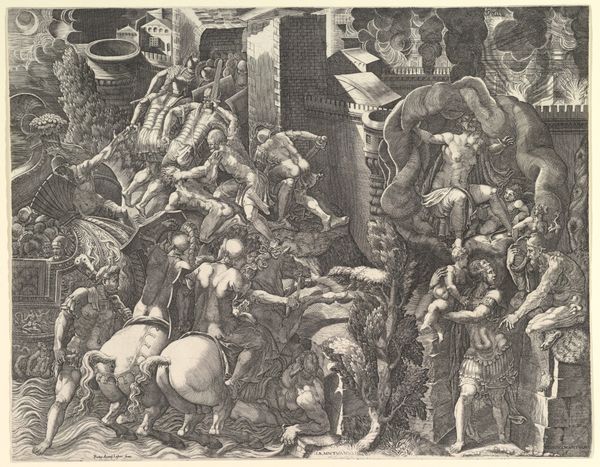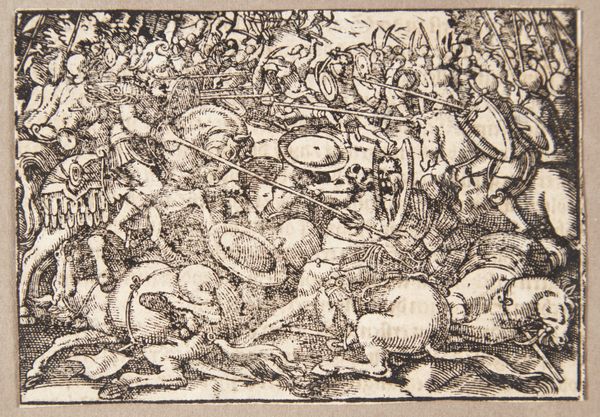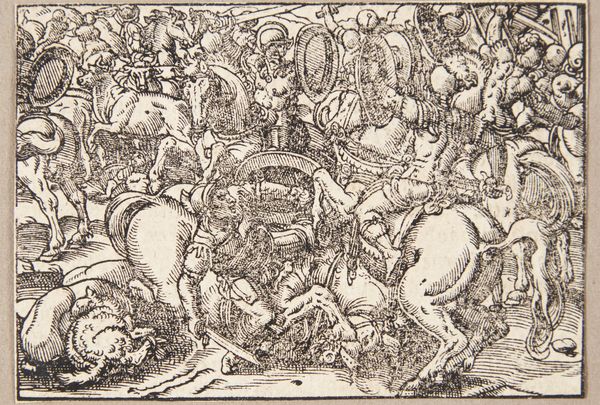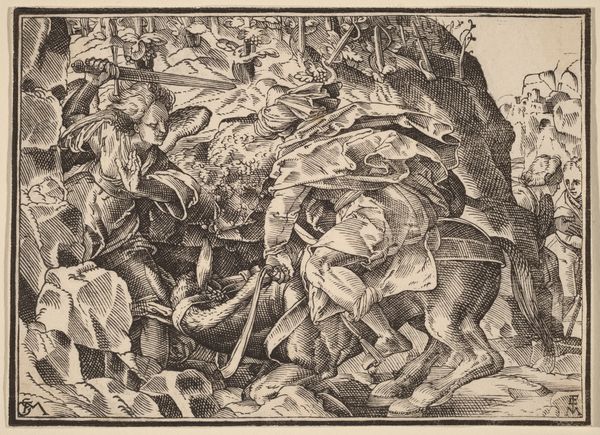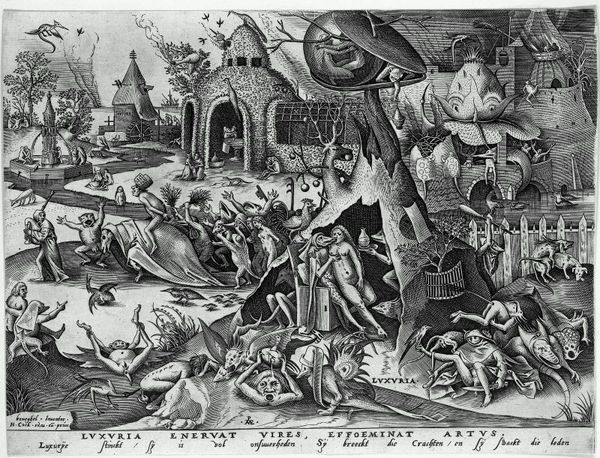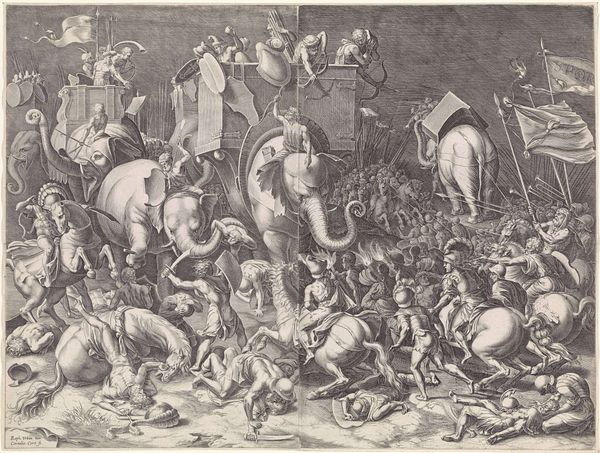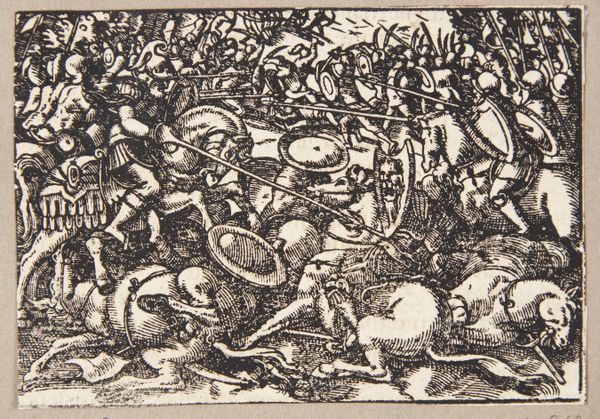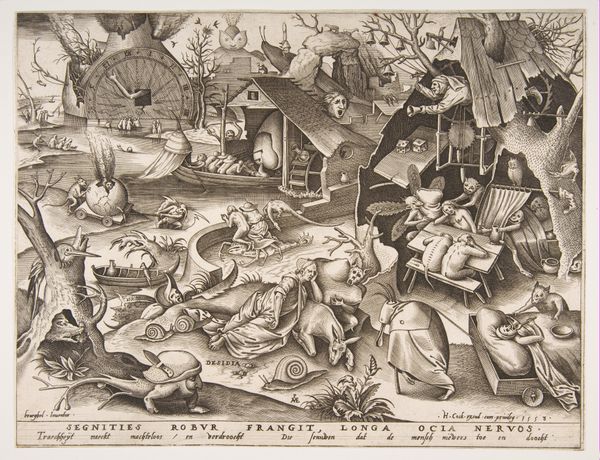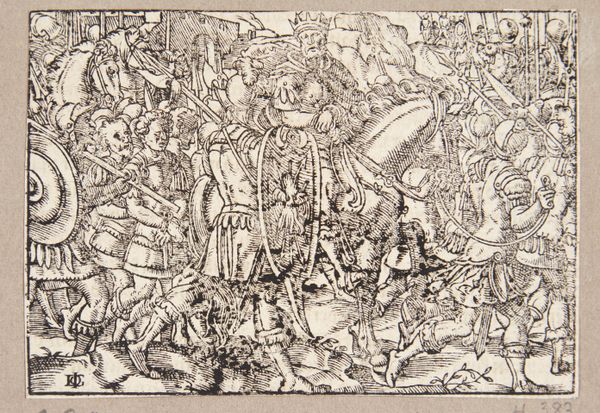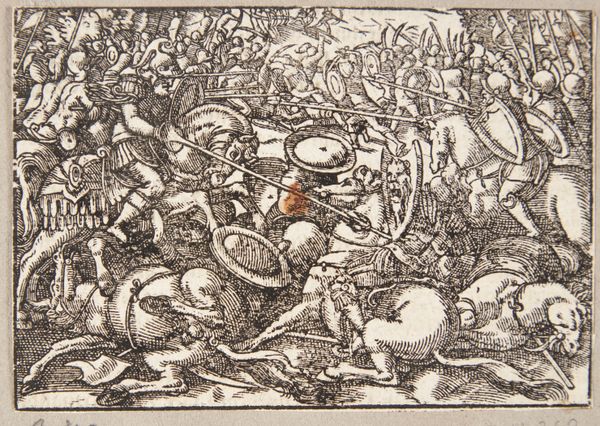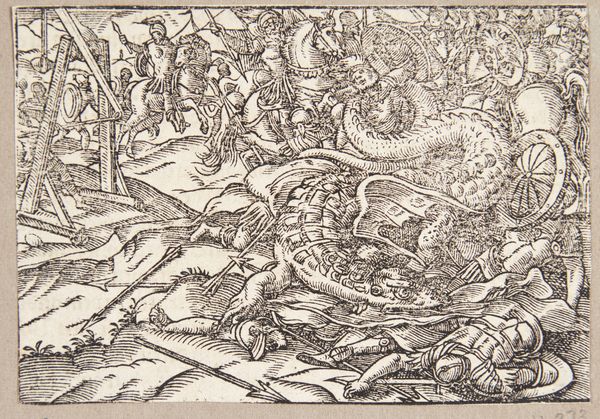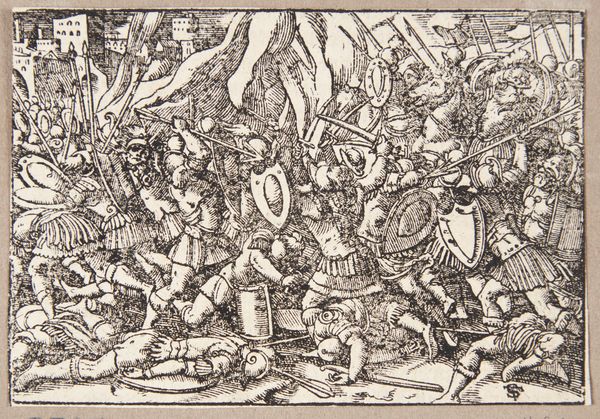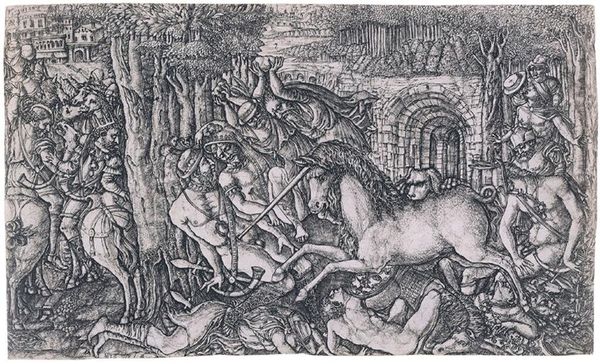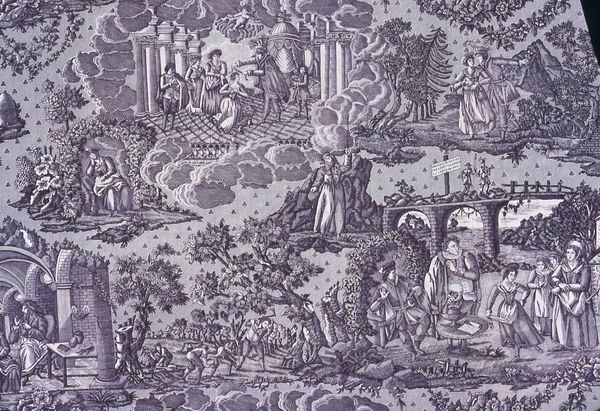
Copyright: Public domain
Editor: Here we have a detail from Hieronymus Bosch’s “Temptation of St. Anthony,” painted around 1506 and currently residing in Lisbon's National Museum of Ancient Art. It's oil on panel, and it strikes me as a chaotic fever dream. What can you make of it? Curator: Fever dream is apt, indeed! Look closely, and you'll notice how Bosch uses symbolism to tap into deeply rooted fears and desires. The monstrous figures aren't just bizarre; they are manifestations of psychological and spiritual battles. Editor: So, each figure represents something beyond just a monster? Curator: Precisely! Consider the hybrid creatures - part animal, part human. They speak to a fracturing of the natural order, reflecting the anxieties of a society grappling with immense change. The fish, for example, often symbolizes sin in Christian iconography. Do you see where they are placed? Editor: I do - they seem to swim even up the walkway toward people gathered near a building. So, Bosch is embedding messages that his contemporary audience would immediately understand. Are there other details you find particularly striking? Curator: The prominence of musical instruments wielded by demonic figures is fascinating. Music can represent both divine harmony and seductive temptation. It invites us to contemplate the dueling nature of sensory experience itself, how it can uplift or corrupt. How does it make *you* feel when considering the placement of the musical instruments within the chaos of temptation? Editor: It makes me consider how what is beautiful to one may bring disorder and corruption to another. It is something to ponder. Thank you! Curator: My pleasure. It is through grappling with these potent symbols that we can glimpse into the cultural memory that Bosch so powerfully evoked.
Comments
No comments
Be the first to comment and join the conversation on the ultimate creative platform.
